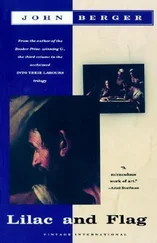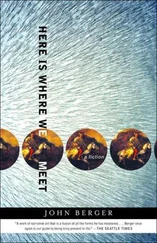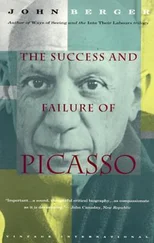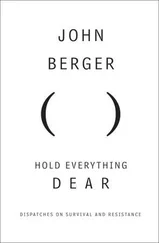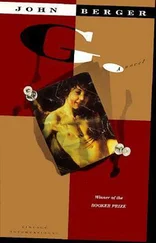It takes time for your eyes to get used to the dark inside one. The single entrance, with a hewn architrave, is narrow and low; you have to crouch to get in. When you can see in the cool dark inside, you observe how, to achieve a vaulted interior without mortar, the layers of massive stones had to be laid one on top of the other with an overlap inwards, so that the space is conical like that of a straw beehive. The cone, however, cannot be too pointed, for the walls need to bear the weight of the enormous flat stones which close the roof. Some nuraghi consist of two floors with a staircase. Unlike the pyramids, a thousand years earlier, these buildings were for the living. There are various theories about their exact function. What is clear is that they offered shelter, probably many layers of shelter, for men are many-layered.
The nuraghi are invariably placed at a nodal point in the rocky landscape, at a point where the land itself might, as it were, have an eye: a point from which everything can be silently observed in every direction — until, faraway, the surveillance is handed on to the next nuraghi. This suggests that they had, amongst other things, a military, defensive function. They have also been called ‘sun temples’, ‘towers of silence’ and, by the Greeks, ‘ daidaleia ’ after Daedalus, the builder of the labyrinth.
Inside, you slowly become aware of the silence. Outside there are blackberries, very small and sweet ones, cacti whose fruit with stony pips the shepherds take the thorns out of and eat, hedges of bramble, barbed-wire, asphodels like swords whose hilts have been planted in the thin soil … perhaps a flock of chattering linnets. Inside the hive of stones (constructed before the Trojan Wars) silence. A concentrated silence — like tomato puree concentrated in a tin.
By contrast, all extensive diffused silence has to be continually monitored in case there is a sound that warns of danger. In this concentrated silence the senses have the impression that the silence is a protection. Thus you become aware of the companionship of stone.
The epithets ‘inorganic’, ‘inert’, ‘lifeless’, ‘blind’ — as applied to stone — may be short-term. Above the town of Galtelli towers the pale limestone mountain which is called Monte Tuttavista — the mountain which sees all.
Perhaps the proverbial nature of stone changed when pre-history became history. Building became rectangular. Mortar permitted the construction of pure arches. A seemingly permanent order was established, and with this order came talk of happiness. The art of architecture quotes this talk in many different ways, yet for most people the promised happiness did not arrive, and the proverbial reproaches began: stone was contrasted with bread because it was not edible, stone was called heartless because it was deaf.
Before, when any order was always shifting and the only promise was that contained in a place of shelter, in the time of the nuraghis , stones were considered as companions.
Stones propose another sense of time, whereby the past, the deep past of the planet, proffers a meagre yet massive support to human acts of resistance, as if the veins of metal in rock led to our veins of blood.
To place a stone upright so that it stands vertical is an act of symbolic recognition: the stone becomes a presence; a dialogue begins. Near the town of Macomer there are six such standing stones summarily carved into ogival forms; three of them, at shoulder-level, have carved breasts. The sculpting is minimal. Not necessarily through lack of means; perhaps through choice. An upright stone then did not depict a companion: it was one. The six bethels are of trachytic rock which is porous. As a result, even under a strong sun, they reach body heat and no more.
When the rising sun, Sardinia, warms your granite You must give birth to new sons.
Earlier than the nuraghi are the domus de janas , which are rooms hollowed out of rock-pediments, and made, it is said, to house the dead.
This one is made of granite. You have to crawl in, and inside you can sit but not stand. The chamber measures 3 m. by 2. Stuck to its stone are two deserted wasp nests. The silence is less concentrated than in the nuraghi and there is more light, for you are less deeply inside; the pocket is nearer to the outside of the coat.
Here the age of the man-made place is palpable. Not because you calculate … mid-neolithic … calcolithic, but because of the relation between the rock you are in and human touch.
The granite surface has been made deliberately smooth. Nothing rough or jagged has been left. The tools used were probably of obsidian. The space is corporeal — in that it seems to pulse like an organ in a body. (A little like a kangaroo’s pocket!) And this effect is increased by the remaining soft smears of yellow and reddish ochre where originally the surfaces were painted. The irregularities of the chamber’s shape must have been determined by variations in the rock formation. But more interesting than where they came from is where they are heading.
You lie in this hiding place, Marcos — there is a faint sweetish almost vanilla smell coming from some herb outside — and you can see in the irregularities the first probings towards the form of a column, the outline of a pilaster or the curves of a cupola — towards the idea of happiness.
By the foot of the chamber — and there’s no question which way the bodies, either alive or dead, were intended to lie — the rock is curved and concave and on this surface a human hand has chipped distinct radiating ribs as on a scallop shell.
By the entrance, which is no higher than a small dog, there was a protrusion like a fold in the rock’s natural curtain, and here a human hand tapered and rounded it so that it approached — but did not yet reach — the column.
All domus de janas face east. Through the entrances from the inside you can see the sun rise.
In a letter from prison in 1931 Gramsci told a story for his two children, the younger of whom, because of his imprisonment, he had never seen. A small boy is asleep with a glass of milk beside his bed on the floor. A mouse drinks the milk, the boy wakes up and finding the glass empty cries. So the mouse goes to the goat to ask for some milk. The goat has no milk, he needs grass. The mouse goes to the field, and the field has no grass because it’s too parched. The mouse goes to the well and the well has no water because it needs repairing. So the mouse goes to the mason who hasn’t exactly the right stones. Then the mouse goes to the mountain and the mountain wants to hear nothing and looks like a skeleton because it has lost its trees. (During the last century Sardinia was drastically deforested to supply railway sleepers for the Italian mainland.) In exchange for your stones, the mouse says to the mountain, the boy, when he grows up, will plant chestnuts and pines on your slopes. Whereupon the mountain agrees to give the stones. Later the boy has so much milk, he washes in it!
Later still, when he becomes a man, he plants the trees, the erosion stops and the land becomes fertile.
P.S. In the town of Ghilarza there is a small Gramsci Museum, near the school he attended. Photos. Copies of books. A few letters. And, in a glass case, two stones carved into round weights about the size of grapefruits. Every day Antonio as a boy did lifting exercises with these stones to strengthen his shoulders and correct the malformation of his back.
24 Will It Be a Likeness? (for Juan Munoz)
Good Evening. Last week I talked about the dog and we listened to some dogs barking. I suggested that this noise after the aeons of dogs’ association with man had something to do with spoken language. Something, but what exactly?
Читать дальше

